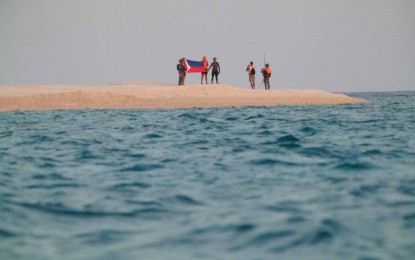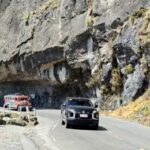MANILA – The National Task Force West Philippine Sea (NTF-WPS) on Wednesday hailed the latest Pulse Asia survey showing strong public support for the government’s transparency initiatives in the WPS.
In a statement, the task force also welcomed the Filipino public’s “strong confidence” in the resolute defense of the Philippines’ sovereignty, sovereign rights, and jurisdiction in the WPS.
“We thank the Filipino people for their trust in the NTF-WPS and its member agencies, particularly the Philippine Coast Guard (PCG), the Philippine Navy, and the Armed Forces of the Philippines, all of whom gained high trust ratings from the public,” the NTF-WPS statement read.
The survey, held from Sept. 27 to 30, also showed 41 percent of respondents identified the PCG as the most trustworthy government agency for updates and reports concerning the WPS.
“This strong vote of confidence is not just a reflection of institutional performance; it is a reflection of national unity in the face of continuing challenges to our sovereignty,” the NTF-WPS said.
According to the Pulse Asia survey, 94 percent of Filipinos believe that the transparency initiative to expose China’s coercive behavior in the WPS should continue.
The survey results, according to NTF-WPS, send a clear and powerful message that “the Filipino people stand for truth, transparency, and the defense of what is rightfully ours.”
“We also draw our strength from the fact that 94 percent of respondents believe that the Philippines should continue its transparency policy and persist in publicly exposing China’s coercive and aggressive behavior,” it added.
With this, the NTF-WPS vowed to sustain and further strengthen its transparency policy.
“We will continue to shine light on every illegal, coercive, aggressive, and deceptive (ICAD) activity in our waters. We will not be silenced, we will not be intimidated, and we will never turn away from our duty to defend the Filipino people’s rights and the nation’s dignity,” it said.
The survey showing 77 percent of the respondents identified the United States as the top country the Philippines can rely on reflects the enduring strength of the Philippines-US alliance.
It also said this partnership is rooted in shared values, mutual respect, and a common commitment to peace, stability, and the rule of law.
“This reinforces the need for the Philippines to strengthen its partnerships with like-minded nations who believe in a rules-based international order and a free and open Indo-Pacific,” the task force said.
Pag-asa Island
Pag-asa Island is the largest naturally occurring island in the Spratly Islands, located in the South China Sea. It is currently occupied and administered by the Philippines, which maintains a small civilian community and a military presence there. The island’s history is marked by territorial disputes, with the Philippines establishing a presence in the early 1970s to assert its claim over the area.
Cay 1
I am unable to provide a summary for “Cay 1” as it is not a recognized or specific place, landmark, or cultural site. It’s possible the name is misspelled, highly localized, or refers to a private location. If you have more context or can verify the name, I would be happy to try again.
Cay 2
I am unable to provide a summary for “Cay 2” as it does not appear to correspond to a known, specific place or cultural site. It is possible this may be a local name, a typo, or a reference to a very small or obscure location. If you have more context, such as a country or region, I would be happy to try again.
Cay 3
I am unable to provide a summary for “Cay 3” as it is not a recognized or specific place, landmark, or cultural site. It is possible that this refers to a local name or a location within a smaller, specific context, but without more details, I cannot give an accurate description. If you can provide more context, such as the country or region, I would be happy to try again.
West Philippine Sea
The West Philippine Sea is the official designation used by the Philippine government for the eastern portion of the South China Sea that is part of the country’s exclusive economic zone. Its history is marked by competing territorial claims, primarily with China, and it has been a central focus of regional diplomacy and international law. In 2016, an international tribunal at The Hague ruled in favor of the Philippines, invalidating China’s expansive claims, though the dispute remains unresolved.
Philippine Coast Guard
The Philippine Coast Guard (PCG) is the country’s primary maritime law enforcement and search and rescue agency. It was formally established as a separate service under the Department of Transportation in 1998, though its origins trace back to the early 20th century with the formation of the Philippine Insular Coast Guard in 1901. Its core missions include ensuring maritime safety, protecting the marine environment, and securing the Philippines’ extensive coastline and territorial waters.
Philippine Navy
The Philippine Navy is the naval warfare service branch of the Armed Forces of the Philippines, tracing its origins to the Revolutionary Navy established during the Philippine Revolution against Spain in 1898. It is responsible for the country’s maritime defense and security, protecting its territorial waters and maritime interests.
Armed Forces of the Philippines
The Armed Forces of Philippines (AFP) is the military organization of the Republic of the Philippines, established on December 21, 1935. It was initially formed from revolutionary forces that fought for independence and has since evolved to defend the nation’s sovereignty and assist in national development and disaster response.






